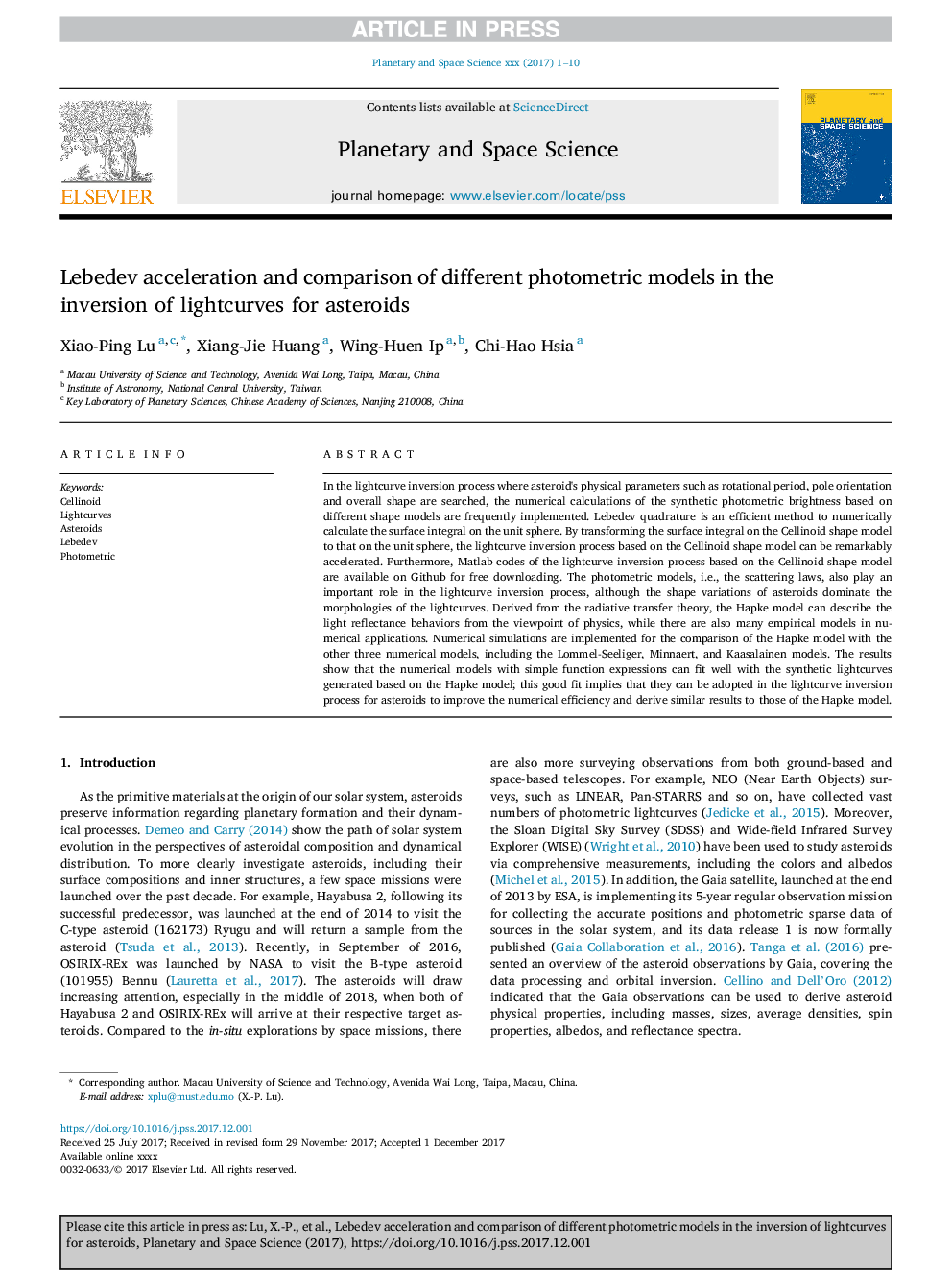| Article ID | Journal | Published Year | Pages | File Type |
|---|---|---|---|---|
| 8142282 | Planetary and Space Science | 2018 | 10 Pages |
Abstract
In the lightcurve inversion process where asteroid's physical parameters such as rotational period, pole orientation and overall shape are searched, the numerical calculations of the synthetic photometric brightness based on different shape models are frequently implemented. Lebedev quadrature is an efficient method to numerically calculate the surface integral on the unit sphere. By transforming the surface integral on the Cellinoid shape model to that on the unit sphere, the lightcurve inversion process based on the Cellinoid shape model can be remarkably accelerated. Furthermore, Matlab codes of the lightcurve inversion process based on the Cellinoid shape model are available on Github for free downloading. The photometric models, i.e., the scattering laws, also play an important role in the lightcurve inversion process, although the shape variations of asteroids dominate the morphologies of the lightcurves. Derived from the radiative transfer theory, the Hapke model can describe the light reflectance behaviors from the viewpoint of physics, while there are also many empirical models in numerical applications. Numerical simulations are implemented for the comparison of the Hapke model with the other three numerical models, including the Lommel-Seeliger, Minnaert, and Kaasalainen models. The results show that the numerical models with simple function expressions can fit well with the synthetic lightcurves generated based on the Hapke model; this good fit implies that they can be adopted in the lightcurve inversion process for asteroids to improve the numerical efficiency and derive similar results to those of the Hapke model.
Keywords
Related Topics
Physical Sciences and Engineering
Earth and Planetary Sciences
Geophysics
Authors
Xiao-Ping Lu, Xiang-Jie Huang, Wing-Huen Ip, Chi-Hao Hsia,
